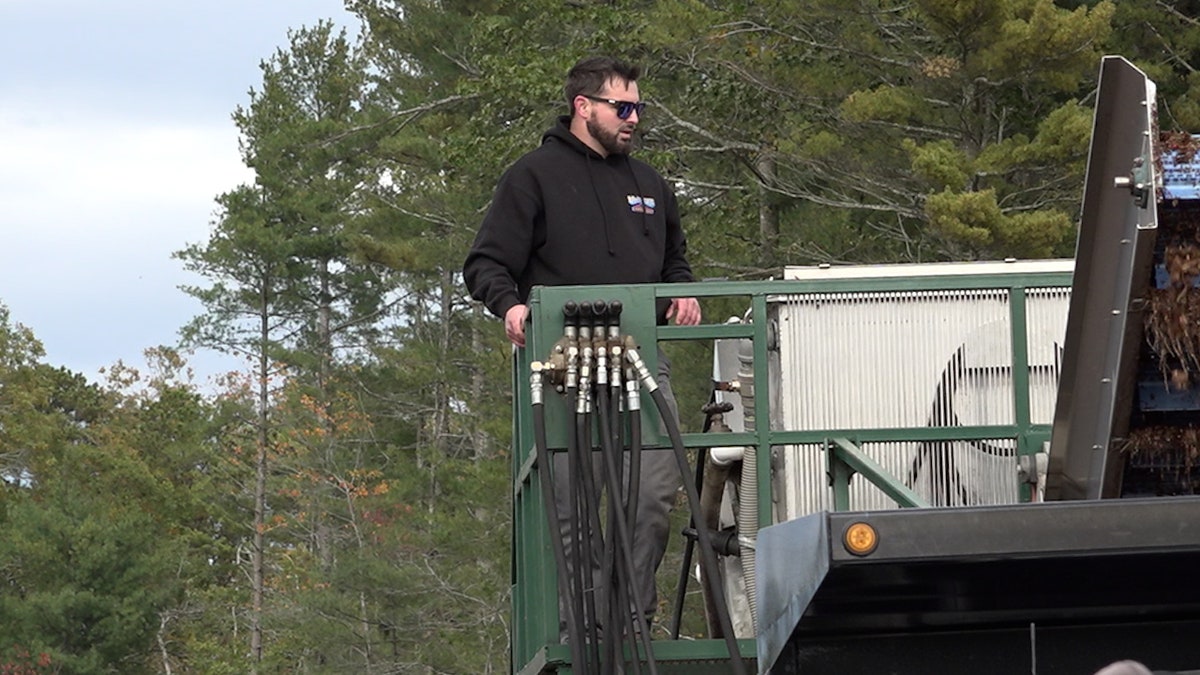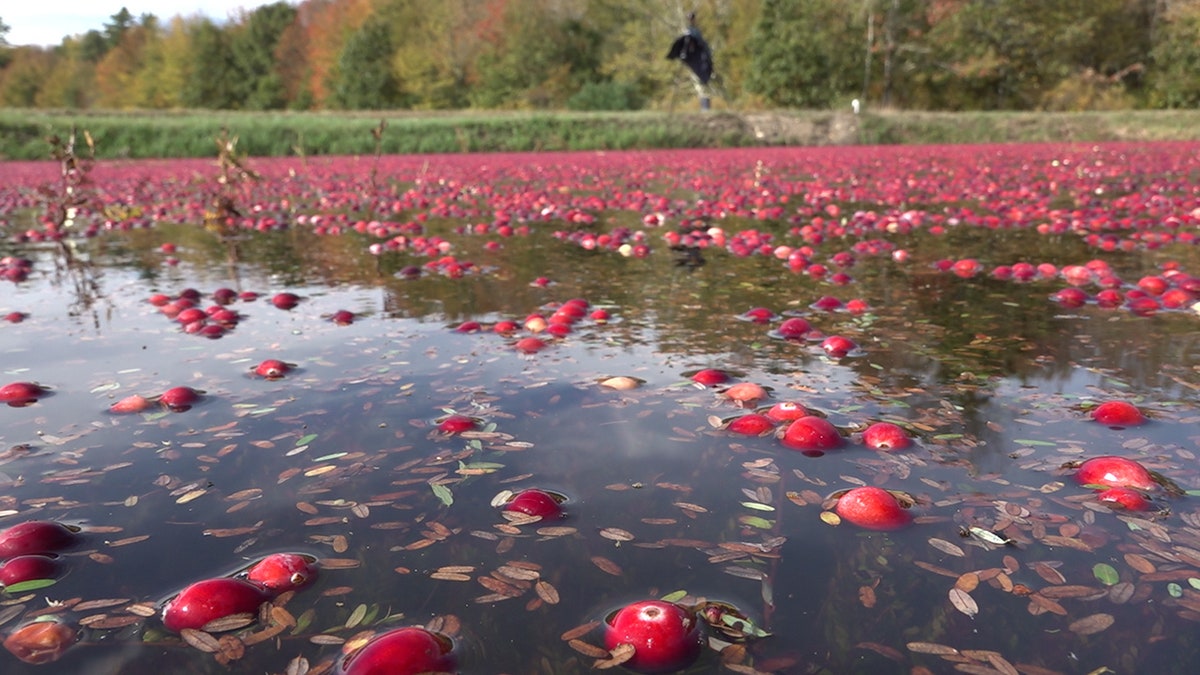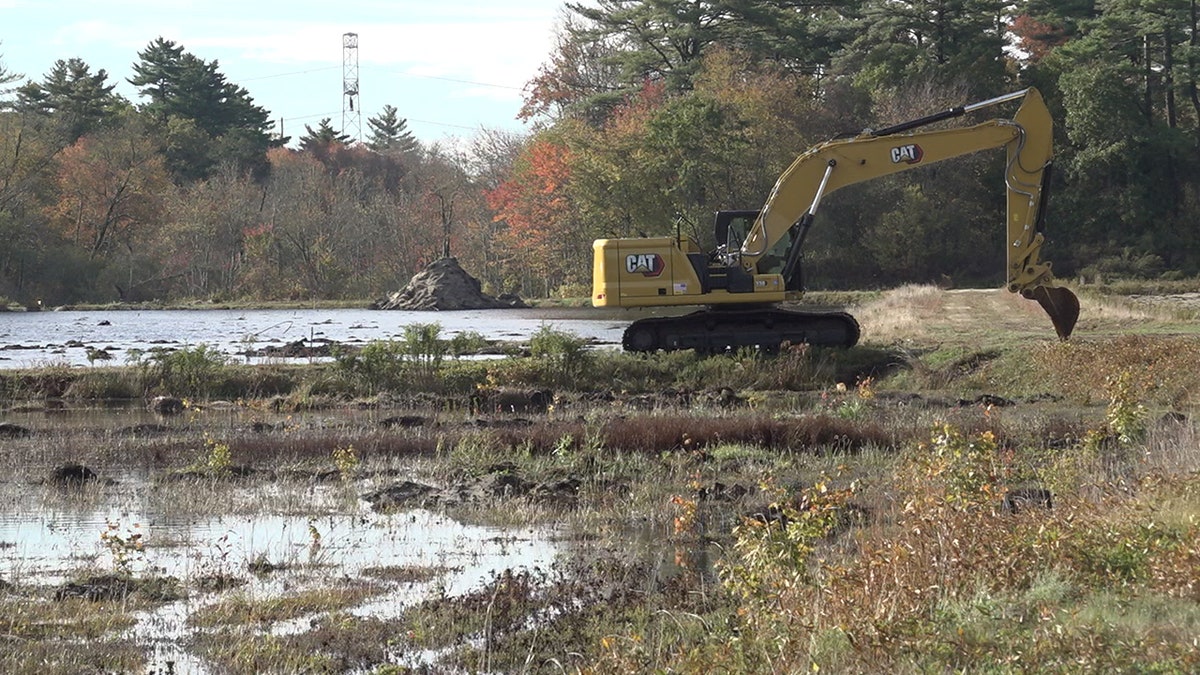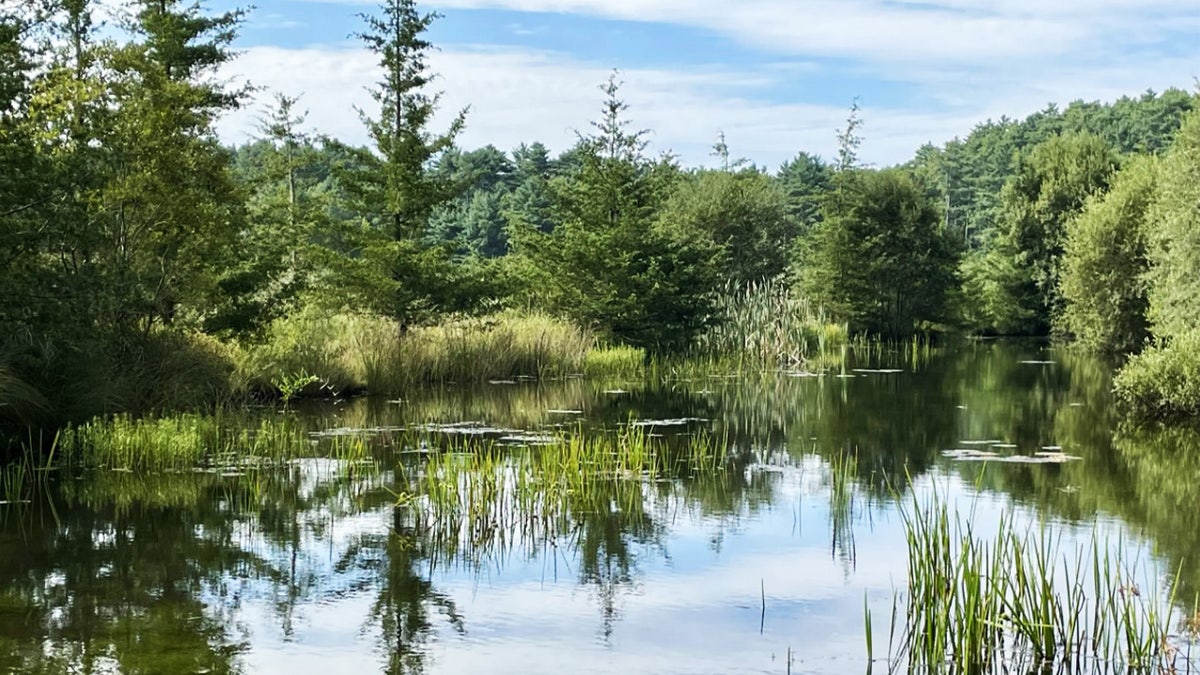Physical Address
304 North Cardinal St.
Dorchester Center, MA 02124
Physical Address
304 North Cardinal St.
Dorchester Center, MA 02124

NEWYou can now listen to articles from Fox News!
CARVER, MASSACHUSETTS – It’s peak season for blueberry farmers in southeastern Massachusetts. The Bay State ranks second behind Wisconsin in blueberry production in the United States
“Massachusetts has an incredibly robust blueberry industry,” says Karen Cahill, deputy executive director of the Cape Cod Cranberry Growers Association.
She tells FOX that a 2023 economic study showed a $1.7 billion contribution to the state’s economy and support for nearly 6,400 jobs in the area.
But one state blueberry farmer says it’s getting harder to grow in Massachusetts.
FARMAGEDDON: TRADE WAR AND TRUMP STOPPING ARE CRUSHING THE HEARTLAND

Jarrod Rhodes, Edgewood Bogs, works alongside crews to harvest this year’s blueberries. (Chelsea Torres)
Jarrod Rhodes, a fourth-generation blueberry farmer in Carver, Mass., produces 50,000 barrels—or 5 million pounds—of blueberries a year on his family farm. His family founded Edgewood Bogs LLC in the early 1940s. The Rhodes launched Cape Cod Select in 2009, where they process some of their own fruit for the frozen retail market, he said.
But increased costs and changing weather patterns are adding pressure.
“It all adds up, and it becomes much more expensive to grow here versus Wisconsin or Canada,” Rhodes said.
Cahill added, “Massachusetts is an expensive place to do business in general, driven by high labor, utility and real estate costs.”
DROUGHT CONDITIONS LEAVE PUMPKIN FARMERS WITH EMPTY FIELDS AND SMALLER CROPS
He also says a key difference is the size of Massachusetts compared to Wisconsin alone.
“The scale in Wisconsin is significantly larger, more than twice the area of Massachusetts, and doing anything at scale tends to make it less expensive,” he said.
With these pressures in mind, Rhodes turned to a state program to remove and restore more than 30 acres of older peatlands.
“The property was in trouble and needed to be rebuilt,” he says.

Blueberry Swamp in Carver, Massachusetts (Chelsea Torres)
The state’s Division of Ecological Restoration (DER) runs a blueberry bog program that converts removed bogs back into native wetlands.
Over the past decade, DER has restored several unprofitable peatlands, including the restoration of the headwaters of the Eel River. RIGHT website says Atlantic white cedar has rebounded, wetlands now cover former farm acreage, and river herring have returned upstream.

This old, unprofitable marsh will become a wetland in the spring of 2026. (Chelsea Torres)
Rhodes knew of an unprofitable peatland and applied for the program, which is funded by state and federal grants.
“We decided not to rebuild this, but to take the money and buy a better property,” he said.
The Rodas now farm less land, but the removed peatland will be permanently protected as a wetland and the family is investing the income in higher-yielding fields.
DER describes the approach as a “green exit strategy,” in which families like the Rhodes are compensated through restoration grants and easements to turn peatlands into wetlands.
SOY FARMERS SQUEEZED AS COSTS RISE
DER’s Krista Haas said the land must be legally protected before construction can begin.
“This puts a deed restriction on the land, which restricts certain activities like development,” Haas said. “Conservation easements are usually done through the USDA Natural Resources Conservation Service (NRCS) Wetland Reserve Easement (WRE) Program.

The state’s Division of Ecological Restoration says this is the first restoration project, Eel River Headwater near Plymouth. (Massachusett State Division of Ecological Restoration)
As more projects take shape, Rhodes said many producers are considering the same path. Some are close to retirement, e younger generations “They’re not that interested,” he said. Restoration of the Rhodes wetlands is scheduled for completion in the spring of 2026.
CLICK HERE TO GET THE FOX NEWS APP
DER Executive Director Beth Lambert said the agency’s goal is to restore 1,000 acres over the next 10 to 15 years.